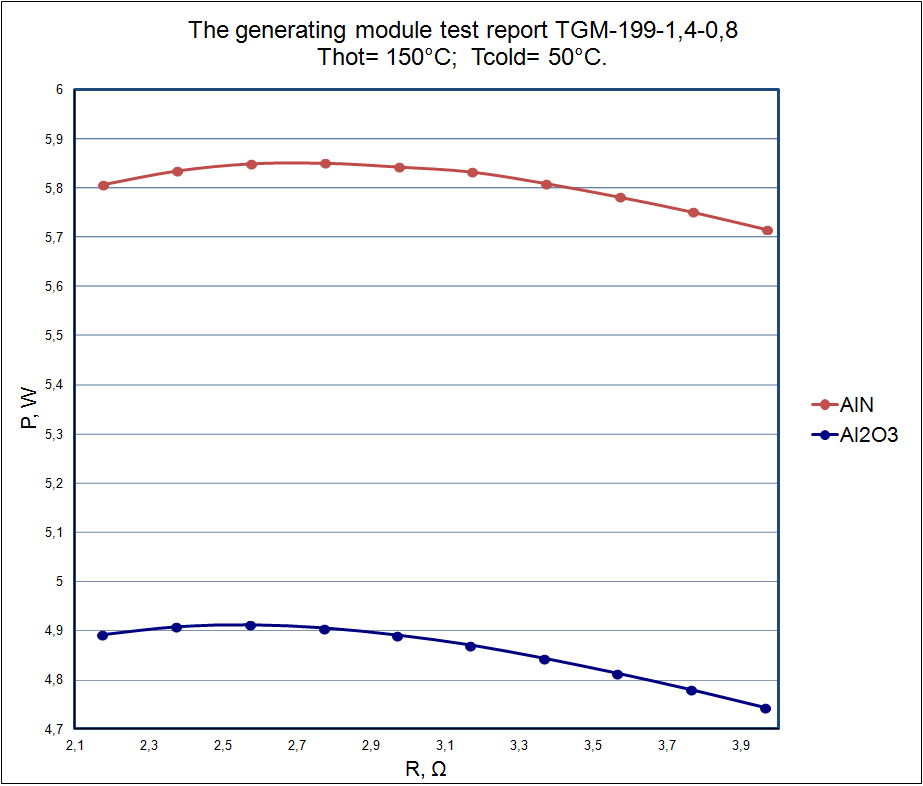The test results of thermoelectric generating modules TGM-199-1.4-0.8
Below are the test results of thermoelectric generating modules TGM-199-1.4-0.8, compared with the calculated data published on the website.
The table on the site shows the calculated value of generated power of the thermoelectric modules. Calculations were provided with taking into account the heat loss in the TGM ceramic substrates of 96% aluminum oxide (Al2O3 with thermal conductivity of 26 W/(m * K) and thermal paste applied for TGM installation in the generator construction. The nominal (rated) power of standard TGM-199-1.4-0.8 with cold side temperature of 50 °C and 150 °C at hot side is 4.3 Watts. The graph shows test results of TGM-199-1,4-0,8 (dependence of power output from the load resistance), conducted by KRYOTHERM facility. The results obtained for the mentioned above TGM with standard version (blue graph) at extremum point (4,91W) are 14% better than calculated data given on the website.
The red graph reflects test results of the same generator module, but assembled with an AlN ceramic substrate made of high thermal conductivity (AlN - aluminum nitride, thermal conductivity of 200 W /(m * K). As one can see from the graphs, the power generated under similar conditions exceed standard version at 20% due to the reduction of losses of the heat flow on ceramics.
Conclusion №1: The above online information about power generated by standard version of TGM corresponds to the worst conditions, and can be increased e.g. by reducing the thickness of the layer of thermal paste, surface finish of heat exchangers in general, and thoroughness of the assembly of the generator;
Conclusion №2: The application of ceramic substrates with high thermal conductivity on the basis of AlN (aluminum nitride), under the same thermal conditions allows to increase the power output by 20% (in our case from 4,91W to 5,85W).
Conclusion №3: Received results could be extended to calculate the power generated by modules in the wider temperature range. For this one can multiply received power value by the square relationship of the temperature range of 100°C (150°C - 50°C). Thus, for the temperature range 30°C on cold side to 200°C on hot side (set in the same table) generated by the module power would be:
14.2 W for TGM-199-1,4-0,8 with ceramics Al2O3;
16.9 W for TGM-199-1,4-0,8 with ceramics AlN.




